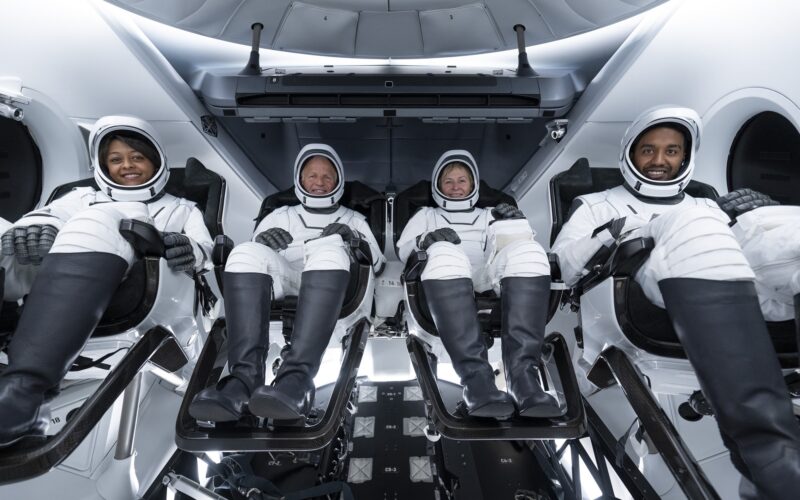A four-person crew blasted their way off to the International Space Station (ISS) on a Space X rocket in what is only the second ever private mission to the hub.
Funded by the Saudi Arabian government, the Space X Falcon 9 rocket launched off on May 21, 2023, from the Kennedy Space Center at Cape Canaveral, Florida at 5:37pm, local time.
As well as being the second privately funded mission to the ISS, the journey is significant in several ways.
Rayyanah Barnawi, a biomedical researcher, becomes the first ever woman from Saudi Arabia to venture into space.
As a pair, Barnawi and fighter pilot Ali Alqarni are Saudi Arabia’s first nationals from the Kingdom to enter outer-space since the 1980s.
The four-person crew flew to space in SpaceX’s Dragon spacecraft atop its Falcon 9 rocket.
Axiom Space, a Houston-based company which facilitates and organizes the mission, sent director of Human Spaceflight Peggy Whitson, a former NASA astronaut and ISS commander, to captain the flight.
The final member of the team is American entrepreneur and trained pilot John Shoffner.
Axiom will not reveal how much Shoffner and Saudi Arabia are paying for the planned 10-day mission.
The astronauts will arrive at the space station on May 22, 2023, where the SpaceX Dragon will autonomously dock to the space-facing port of the station’s Harmony module.
The astronauts did a quick check-in from the SpaceX Dragon Freedom spacecraft during their journey a few hours after launching.
“Hello from outer space! It feels amazing to be viewing Earth from this capsule,” Barnawi said.
Once aboard the station, the Ax-2 crew will be welcomed by Expedition 69 crew members, including NASA astronauts Frank Rubio, Stephen Bowen, and Woody Hoburg, UAE (United Arab Emirates) astronaut Sultan Alneyadi, and Roscosmos cosmonauts Dmitri Petelin, Sergey Prokopyev and Andrey Fedyaev.
“Congratulations to Axiom, SpaceX, and the Axiom Mission 2 crew on a successful launch! During their time aboard the International Space Station, the Ax-2 astronauts will carry out more than 20 scientific experiments, helping us better understand space radiation, weather in low-gravity conditions, and more,” said NASA administrator Bill Nelson.
The mission continues progress toward the Axiom Station, the world’s first commercial space station and successor to the ISS.
The Axiom Space team are expected to return on May 30, pending weather, for a return to Earth and splashdown at a landing site off the coast of Florida.

